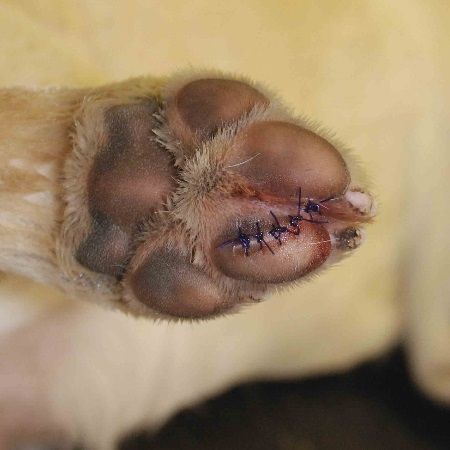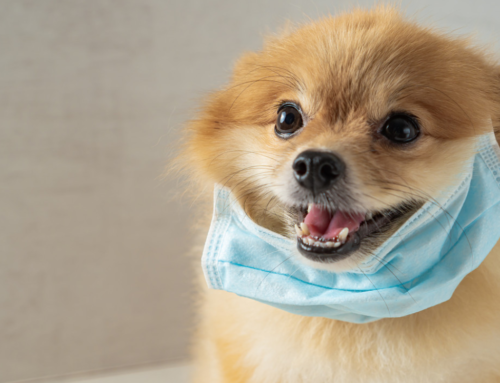Colder weather is just around the corner, which means shorter days, snowy walks, and all the hot chocolate you can drink. For pet parents, though, it signals the start of one of the most pet care-intensive seasons of the year: winter. Hold on, you might be saying to yourself. Isn’t summer the month where Fido maintenance levels up? Not necessarily, especially if your pets need to take walks outside. Cold weather brings snow, ice, and general discomfort, which means it is the time of year to spend some time caring for Fido’s paw pads.
Paw pads are an often-overlooked aspect of pet maintenance. Maybe it’s because they’re hidden unless Fido is lying down. Maybe it’s because they’re not an especially fun part of pet care. Perhaps it’s just that they’re easy to forget. Whatever the case, we realized there’s a lot of need for a resource about caring for these adorable little toe beans. Here’s what you need to know, especially when gearing up for the winter months.
What are Paw Pads, Exactly?
Paw pads are a layer of pigmented skin, most often black but sometimes pink, that cover fatty tissue on Fido or Fluffy’s paws. They are essential to an animal’s foot structure, working with the pet’s nails to provide protection and stability. The assist with balance, provide traction, help with stability, and absorb shock.
Importantly, paw pads are lightly warming. The fat tissue underneath is insulating, providing some much-needed protection from cold winter sources, like ice, snow, and salt. Equally dangerous are the ice-melt products that cut through the winter freeze. While paw pads can protect against these chemicals, they may burn, itch, or become uncomfortable.
Everyday Habits
There are a few things pet parents can do every day to ensure the longevity of Fido’s paw pads. While some parts of the year necessitate these steps more than others, occasional checks are necessary for optimal pet health.
- If you walk your pet in the winter, wash off their paws after any trip outside, especially if they have been walking on salt-treated surfaces. Fido could ingest the chemicals accidentally, leading to dangerous health complications.
- If you walk your pet in the summer, wash their paws every time they enter the house, especially if you live in a city. Rat urine, which is common in city parks and on sidewalks, can carry dangerous diseases. If your dog tracks it into the house, it could cause health complications for both you and Fido.
- Try dog booties, regardless of climate. This is a great way to protect your pup’s feet, even in the most extreme weather conditions. Look for sturdy, well-fitted, non-slip boots. If you’re in the market for winter shoes, look for options with light insulation.
- Trim the fur or hair that grows between your dog’s paw pads. This will keep their feet healthy, provide more traction on slippery surfaces, and prevent the build-up of ice during winter walks.
Paw Pad Care and Preparing for Winter
The best thing you can do to prepare for winter walks is to introduce Fido to his new shoes. Doing this slowly will help desensitize your pup to the wearables, making him less stressed out and more comfortable moving around. The process should take between two and four weeks, depending on your pet’s obedience.
When picking out your pet’s shoes or winter boots, do your best to bring them along when you make the purchase. This is a great way to ensure proper fit and allow Fido to have some say – or, at least, bark at the options he finds scarier than the others. Bring lots of treats, rewarding him for trying on the boots.
Once you’ve picked out a pair of shoes, complete the following steps regularly for several weeks. Fido will feel comfortable in his new shoes in no time!
- Call him to you and have him lie down.
- Slip the boots on one at a time, giving him treats after each boot.
- Keep him inside, at least at first. Indoor training allows you to control the environment, limiting potential stressors.
- Bring out the toy basket and encourage your dog to play with the shoes on. This will keep his mind off the new boots and get him used to wearing them.
- Give him some time to play around the house in the boots. Take them off if he starts to get nervous and try again later.
- After a couple of weeks, start taking him outside, but bring the treat bag along. Consistent rewards are the best way to get a dog used to something. Just be sure to keep an eye on the boots themselves – they could fall off without you noticing.




